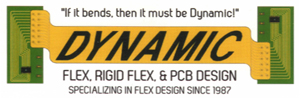Benefits of Using Flexible Printed Circuit Boards
Flexible printed circuit boards are a new and trending concept in the world of electronics that have taken a portion of the market in a very short timespan. Due to their unique properties, manufacturers usually misunderstand these circuits. Flexible Printed Circuit
This is because they lack the necessary capability to deal with the design, component mounting, and finishing of these flexible circuits. These circuits are highly durable and allow you to customize them to fit a device easily. The design is created based on specifications on how to fit in the final product. Flexible circuits have many benefits associated with their use, some of which are discussed below:
- Weight Reduction & Package Sizing
Packaging size and carry weight is reduced significantly due to unique design, space, weight, and component saving requirements compared to other solutions. These boards can easily fit where others cannot, as they are lightweight and thin enough to allow substantial flexibility.
Using a flexible circuit solution into your design offers a weight reduction benefit over traditional wire harnesses and a network of wires. An added benefit is that it can quickly reduce the errors in hand wiring assemblies.
- Durability & Reliability
Flexible printed circuit boards need fewer interconnections, which means there is less soldering needed along with contact crimps.
This makes them durable, leaving very little spaces for failure, and improves the reliability of the devices for which they were designed.
Flexible printed circuit boards perform much better than others due to their low mass (less impact vibration), and lower number of joints. They also have high thermal stability, withstanding heat effectively, and durable as well. These circuits are mainly used in the military and the medical field.
As to the possibility of circuit failure, it can result from environmental stresses. However, such failures can be avoided if proper safety measures are placed, ensuring their being functional for a long time to come.
Unlike traditional circuit boards, flexible circuits are usually made with materials that can withstand harsh environmental conditions easily. They are waterproof, shockproof, and anti-corrosive.
- Cost Saving
Another benefit of using flexible printed circuit boards is that they are highly cost-effective due to their small size and lightweight capabilities.
The thin polyimide film used in manufacturing requires a much smaller area and so reduces the overall finished product assembly size, along with material costs.
There are fewer parts needed in assembling these circuit boards, and so they reduce the manufacturer’s cost that way, as well. Less parts means a reduction assembly errors, wire routing malfunctions, reworks, and rejects.
- Performance
Flexible circuits provide excellent electrical performance due to the presence of low dielectric constants that allow for a suitable flow of electricity throughout the circuit.
In addition, their excellent thermal stability allows them to remain cool even at a high melting point. This allows the circuits to perform at optimum levels even in the harshest of conditions.
Due to fewer joints and soldering present, the electricity flows without interruption, resulting in higher performance.
- High Temperature and High-Density Applications
Flexible circuits have a component that can dissipate heat more than traditional dielectric circuits, as they are made from a high-temperature and high-density material.
This minimizes the expansion and contraction of the component. These boards have excellent chemical resistance against materials like oils, acid, or gases, along with UV exposure and radiation.
These circuits are highly dense and made with lighter components that leave additional space for more features to be added later.
Flexible printed circuit boards are designed and manufactured to handle more complex circuitry compared to traditional circuits.
Briefly stating the benefits, these flexible circuits are:
- Lightweight
- Meet dynamic flexing requirements
- Easy to install and service
- Improve aesthetics, eliminates connectors
